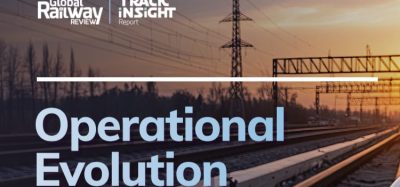Interview spotlight: Marcel Ujfaluši, GHH-BONATRANS
Posted: 13 June 2019 | Marcel Ujfaluši - GHH-BONATRANS | No comments yet
Marcel Ujfaluši, Head of Business Development and Marketing at GHH-BONATRANS, explains how wheelset innovation can make freight transportation safer, more reliable, less noisy and more economic.
What can you tell us about trends in freight wheelsets?
There are several innovative aspects for new generation freight wheelsets that must be considered when meeting the high expectations of railway operators and wagon owners. Safety and reliability remain top priorities and are more important than ever when changes in operation are introduced which influence a wheelset and the other components it interfaces. The lifespan of both wheels and axles and their impact on the LCC of the wheelset and price of cargo transported has become increasingly important, above all since private companies started to carve a significant market share in cargo transportation. Finally, the issue of noise and vibration from the interaction between the track and the wagon (or wheels in particular) has been a major challenge for several years. The goal for our engineers has been to the find the right balance between those expectations, whilst also being tailored to different climates, tracks and operation conditions.
Can you develop on safety and reliability?
A railway is a system of systems. When changing one component you must consider its impact on others. The application of composite brake blocks motivated by noise mitigation targets has substantially increased thermal stress to wheels from braking. For some designs, such as BA004 and B29, even with previously long and successful track records, it increased their probability of failure. To compensate, the operators had to introduce extra checks and so the cost of maintenance increased, while the lifespan decreased. The increase of axle loads motivated by cargo capacity increase per wagon and transportation costs reduction, represents increased mechanical stress. In fact, as far as design, in Europe both stresses are calculated separately, however, the combination of both is also significant. That is why our new internal methodology, taking advantage of improvements in design and validation tools, calculates wheel behaviour at thermal and mechanical stresses simultaneous to minimise the possible negative impact to wheels in operation.
What is the practical outcome of this new methodology?
It’s the third generation of stress optimised wheels called BA320. It is dedicated for up to 25 tonnes axle load, weighs 336kg and its rim can integrate BONASILENCE® noise damping solutions. It contains steel grade called BONASTAR® with higher resistance to rolling contact fatigue and with higher wear resistance. Low residual tangential stress makes it more resistant to thermal stress, preventing crack initiation and propagation (and eventually from wheel breakage). It has solid rim deformation parameters, minimising wheelset gauge change, and so allowing for a more efficient ride (rail head versus wheel flange). Let me recall that the first two generations of BONATRANS wheel designs (BA314/324 and BA319/318) carry most existing wagon fleets in Europe. Therefore, we were able to apply calculation improvements on top of extensive experience and track record from nearly all European countries over the last 20 years. Finally, BA320 combined with the BONAESFA axle aims to achieve service intervals of 1.2 million kilometres to further reduce maintenance costs.
From theory to real life, how successful is it in operation?
Germany and Switzerland are pushing hard for innovations in rail freight transportation. BMVI and 5L TIS projects are both aimed at freight car of the future, applying innovative aspects from passenger rolling stock that brings proven benefits, and whilst exploring new areas. We take part in both projects. BA320 is part of BMVI project where it proved reduction of rolling noise up to 6 dB. Obviously, we must consider that freight is very sensitive to costs. Any innovation needs to bring technical improvements combined ideally with the decreased cost of transportation which can be challenging to achieve. Certainly, more sophisticated (and expensive) solutions are ideal for wagons with high mileage and the future policy of track charges will be hugely influential on RoI considerations.
Biography






